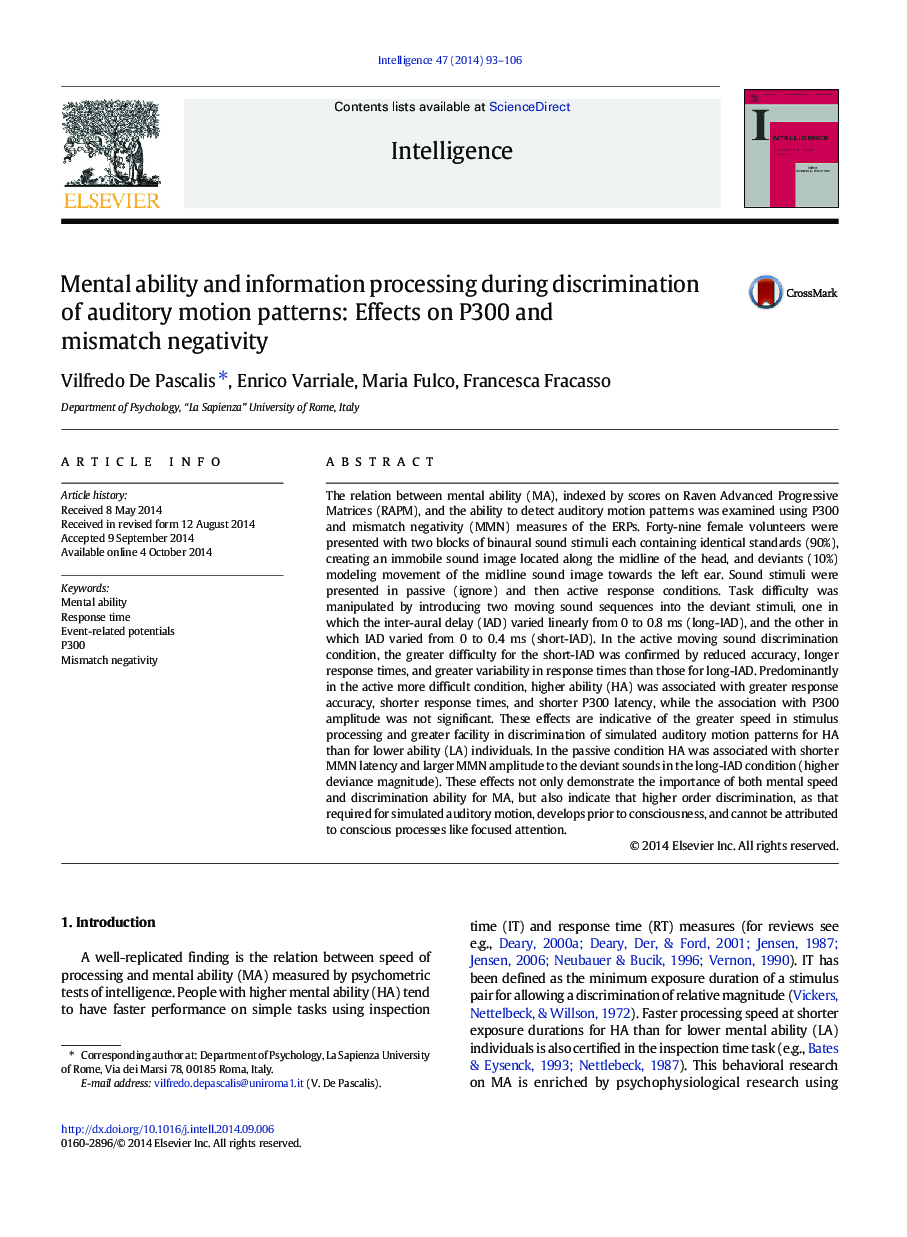| Article ID | Journal | Published Year | Pages | File Type |
|---|---|---|---|---|
| 929056 | Intelligence | 2014 | 14 Pages |
•Mental ability and moving sound discrimination ability were examined by recording ERPs.•Higher ability was associated with greater response accuracy and discrimination time.•P300 latency was associated with higher ability in both easy and difficult tasks.•Larger MMN amplitude and shorter latency were associated with higher mental ability.•MMN and P300 latencies were associated with response accuracy in the difficult task.
The relation between mental ability (MA), indexed by scores on Raven Advanced Progressive Matrices (RAPM), and the ability to detect auditory motion patterns was examined using P300 and mismatch negativity (MMN) measures of the ERPs. Forty-nine female volunteers were presented with two blocks of binaural sound stimuli each containing identical standards (90%), creating an immobile sound image located along the midline of the head, and deviants (10%) modeling movement of the midline sound image towards the left ear. Sound stimuli were presented in passive (ignore) and then active response conditions. Task difficulty was manipulated by introducing two moving sound sequences into the deviant stimuli, one in which the inter-aural delay (IAD) varied linearly from 0 to 0.8 ms (long-IAD), and the other in which IAD varied from 0 to 0.4 ms (short-IAD). In the active moving sound discrimination condition, the greater difficulty for the short-IAD was confirmed by reduced accuracy, longer response times, and greater variability in response times than those for long-IAD. Predominantly in the active more difficult condition, higher ability (HA) was associated with greater response accuracy, shorter response times, and shorter P300 latency, while the association with P300 amplitude was not significant. These effects are indicative of the greater speed in stimulus processing and greater facility in discrimination of simulated auditory motion patterns for HA than for lower ability (LA) individuals. In the passive condition HA was associated with shorter MMN latency and larger MMN amplitude to the deviant sounds in the long-IAD condition (higher deviance magnitude). These effects not only demonstrate the importance of both mental speed and discrimination ability for MA, but also indicate that higher order discrimination, as that required for simulated auditory motion, develops prior to consciousness, and cannot be attributed to conscious processes like focused attention.
